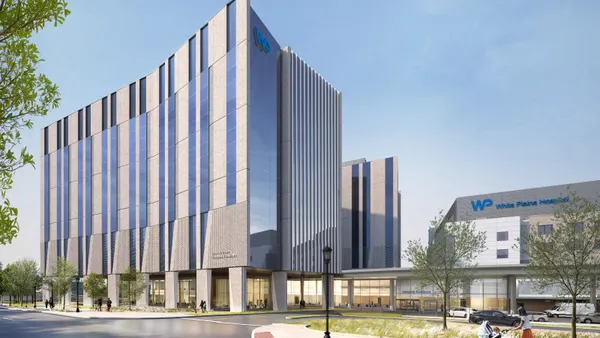Dive Brief:
- New York City public and private institutional construction starts in 2015 totaled $4.6 billion, an increase of 22% from 2014 and the highest figure since 2009, according to a New York City Building Congress analysis of Dodge Data & Analytics statistics. The value of starts from July 2008 to June 2016 was $26.1 billion.
- Institutional construction starts during the first six months of 2016 — valued at $1.4 billion — were down slightly more than 50% from the same period last year, but the NYBC noted that the January 2015-June 2015 interval saw more large projects underway. Nevertheless, the first half of 2016 still beat out the first half of 2014 ($796 million) and 2013 ($1.2 billion).
- Healthcare facilities (31%; $8 billion) and schools/universities (53%; $13.7 billion) made up the biggest percentage of institutional projects started from July 2008 to June 2016, with the two sectors combined capturing the largest 10 institutional projects initiated in the first half of this year.
Dive Insight:
The NYBC also noted that, along with increased commercial and residential activity in the outer boroughs of Queens, Staten Island, Brooklyn and the Bronx, those areas laid claim to nine of the 10 largest institutional projects started between January and June of this year.
In June, another Dodge-driven NYBC report estimated that there had been $3 billion worth of school construction starts and renovations in 2015, up 83% from 2014. The high number of alterations and renovations, the NYBC said at the time, was indicative of the city's desire to modernize existing stock rather than build new.
No doubt healthcare facilities — also a standout in New York's institutional construction market — are getting a boost from the Affordable Care Act, which outlines a new reimbursement plan based on the overall health progress of the patient. Cindy Juhas, chief strategy officer for medical equipment company CME, told Construction Dive last month that healthcare providers are adjusting their business models to allow for greater access to those patients via smaller, more convenient clinics.












